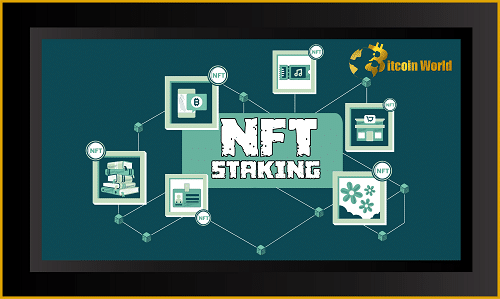Locking up NFTs on a platform or protocol in order to collect staking rewards and other benefits is referred to as “NFT staking.” By doing this, NFT owners can continue to own their NFTs while generating a passive income.
When compared to other DeFi yield farming techniques, NFT staking is still in its infancy, but it functions similarly.
Depending on the yearly interest rate, the length of the staking period, and the quantity of NFTs staked, you can earn rewards by locking up NFTs on a platform.
Investors and collectors often prefer to HODL and speculate because of the special characteristics of NFTs.
NFT staking gives them a new way to make money off of their assets, which can entice more people to take part and raise the market demand for stakable NFTs.
Staking an NFT is similar to staking your ether or bitcoin (BTC) (ETH). A bitcoin wallet with NFTs is all you require. Not all NFTs, nevertheless, can be staked in order to get rewards.
Before purchasing the NFTs, it is best to confirm the specifications for the projects you are interested in.
Where can NFTs be staked?
The majority of NFT staking chances as of December 2021 come from play-to-earn games. Examples are Zookeeper and MOBOX. Some initiatives, including Doge Capital and the Binance Fan Token Platform, are also enhancing NFT staking capabilities on their platforms.
Participants can get additional cash from their unused NFT collections by engaging in NFT staking. NFT staking is simultaneously generating hitherto undiscovered use cases for NFTs.
It may be too soon to say, but new NFT staking opportunities will undoubtedly be developed, not just for NFT collectors but also in the Play-to-Earn gaming sector and other blockchain-powered industries.
Disclaimer: The information provided is not trading advice, Bitcoinworld.co.in holds no liability for any investments made based on the information provided on this page. We strongly recommend independent research and/or consultation with a qualified professional before making any investment decisions.


